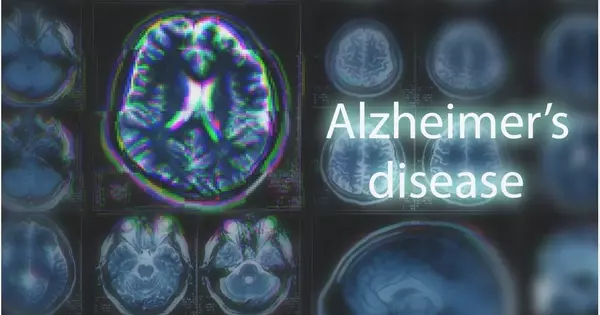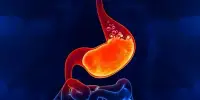Current Alzheimer’s treatments temporarily improve symptoms of memory loss and thinking and reasoning difficulties. These Alzheimer’s treatments improve the performance of brain chemicals that transport information from one brain cell to another. These treatments, however, do not stop the underlying decline and death of brain cells. Alzheimer’s disease progresses as more cells die. A link between the protein medin and Alzheimer’s disease has been discovered by researchers.
Along with the protein amyloid-, the protein medin is found in the blood vessels of Alzheimer’s patient’s brains. DZNE researchers discovered this phenomenon known as co-aggregation. Their findings have now been published in the journal Nature. Medin has been known for over 20 years, but its impact on diseases was previously overlooked.
We were able to show that pathological changes in the blood vessels of Alzheimer’s patients are significantly enhanced by medin,” says Dr. Jonas Neher from the Tübingen site of DZNE, who led the study. The Hertie Institute for Clinical Brain Research in Tübingen, the University of Tübingen and several international institutions and cooperation partners were also involved in this long-term project.
Medin is amyloid. Amyloid- is the most well-known of these proteins because it clumps together in the brains of Alzheimer’s patients. These aggregates then deposit as so-called plaques in both the brain tissue and its blood vessels, causing damage to both the nerve cells and the blood vessels. However, while many studies have concentrated on amyloid-, medin has received little attention. “There was little evidence of pathology, that is, of a clinically striking finding associated with medin, and that is often the prerequisite for a more in-depth study of an amyloid,” Jonas Neher explains.
Only a few research groups worldwide are working on medin at all. We have now demonstrated through numerous experiments that medin actually promotes vascular pathology in Alzheimer’s models.
Jonas Neher
However, medin is found in the blood vessels of almost everyone over the age of 50, making it the most common amyloid known. Jonas Neher and his colleagues discovered that medin even develops in aging mice and published their findings in the scientific journal PNAS two years ago. The finding at the time was that the older the mice get, the more medin accumulates in their brain blood vessels. Furthermore, when the brain becomes active and causes an increase in blood supply, vessels with medin deposits expand more slowly than those without medin. However, the ability of blood vessels to expand is critical for optimal oxygen and nutrient delivery to the brain.
The researchers built on this foundation in their latest findings, which focused specifically on Alzheimer’s disease. First, they demonstrated in Alzheimer’s mouse models that medin accumulates even more strongly in the blood vessels of the brain when amyloid-β deposits are present. Importantly, when brain tissue from organ donors with Alzheimer’s disease was examined, these findings were confirmed. When mice were genetically modified to prevent the formation of medin, significantly fewer amyloid- deposits formed, resulting in less damage to blood vessels.

“Only a few research groups worldwide are working on medin at all,” says Jonas Neher. A recent study from the United States found that medin levels may rise in Alzheimer’s patients. However, it was unclear whether this increase was simply a result of the disease or if it was one of the causes. “We have now demonstrated through numerous experiments that medin actually promotes vascular pathology in Alzheimer’s models,” Neher said. As a result, medin deposits are a cause of blood vessel damage. “And this suggests that medin is one of the disease’s causes,” Neher said.
In their studies, the researchers stained tissue sections from both mice and Alzheimer’s patients in such a way that specific proteins become visible. This allowed them to show that medin and amyloid-β are deposited together in blood vessels of the brain co-localization is the technical term for this. In the next step, they were able to prove that these two amyloids also co-aggregate that is, form mixed deposits. “Amazingly, medin interacts directly with amyloid-β and promotes its aggregation this was completely unknown,” Jonas Neher summarizes the results.
It is precisely from this realization that the researchers hope to develop a new treatment. “Medin may be a therapeutic target for preventing vascular damage and cognitive decline caused by amyloid accumulation in brain blood vessels,” they conclude. Experts agree that, in addition to amyloid-β aggregates in brain tissue, vascular alterations – that is, reduced function or damage to blood vessels – promote the development of Alzheimer’s disease. As a result, treatments that target not only plaques but also affected blood vessels may be beneficial to patients.
The next step will be to determine whether medin aggregates can be removed therapeutically and whether this intervention has an effect on cognitive performance. The scientists plan to test this first in mouse models, which accurately reflect the pathological changes seen in Alzheimer’s patients.
















